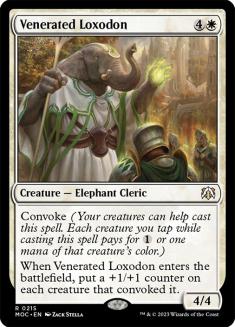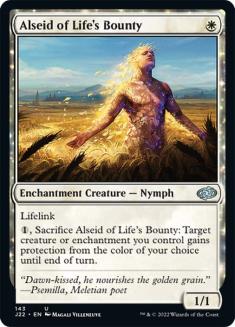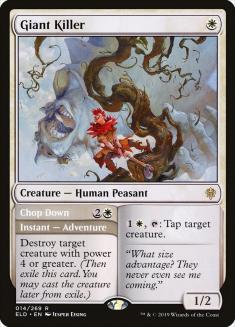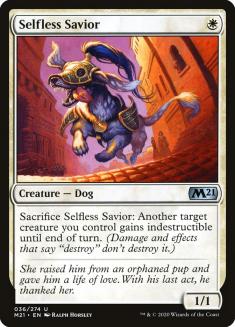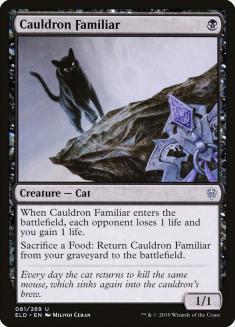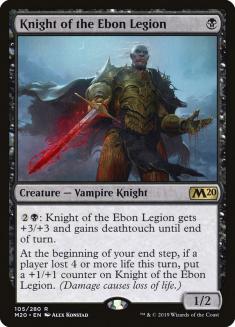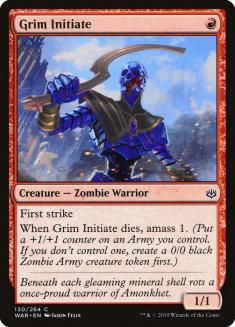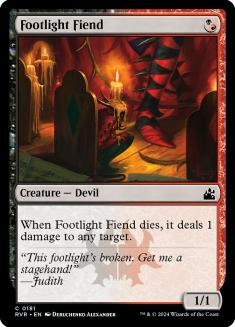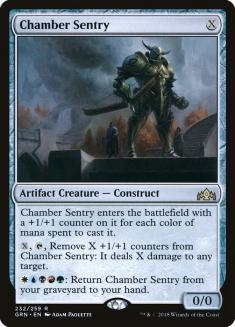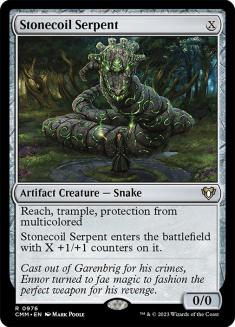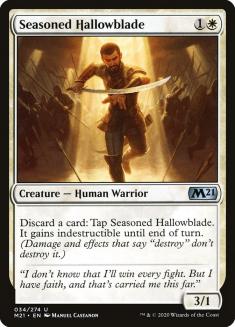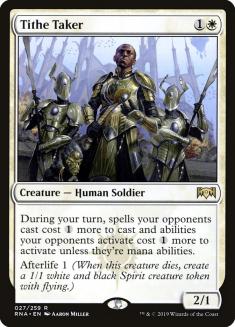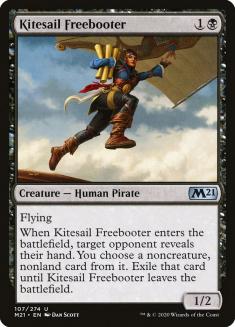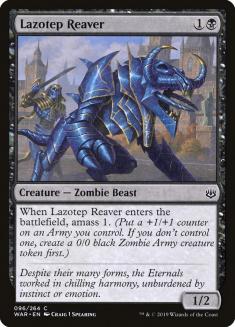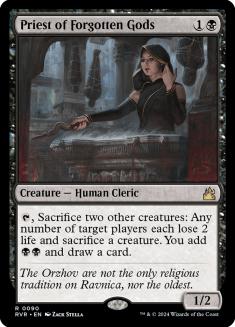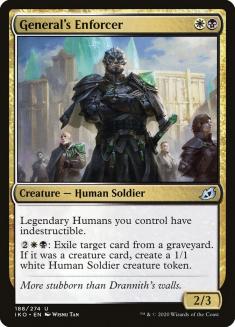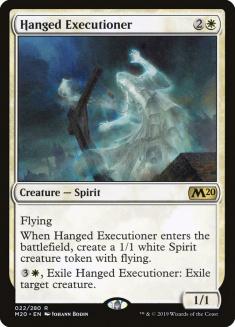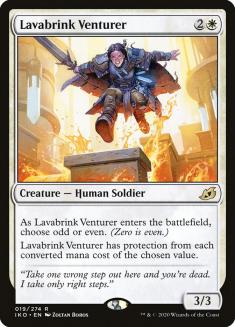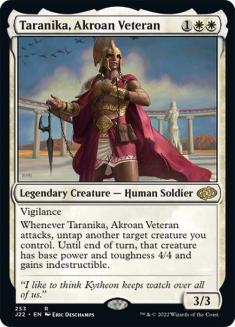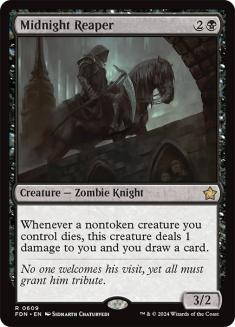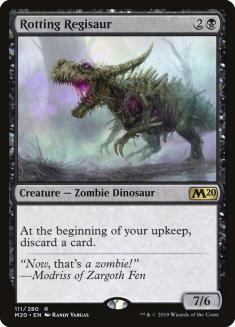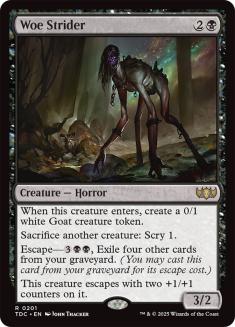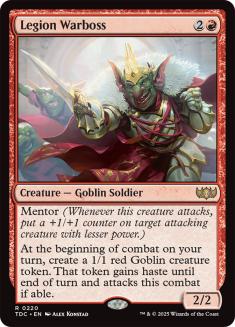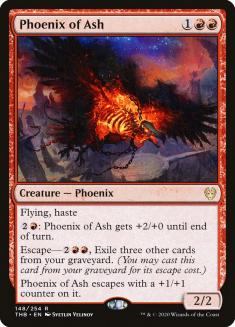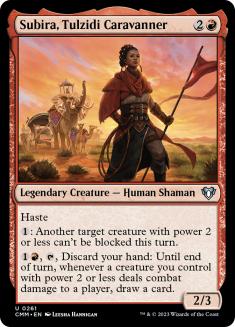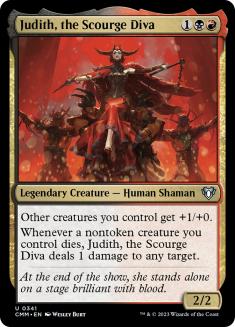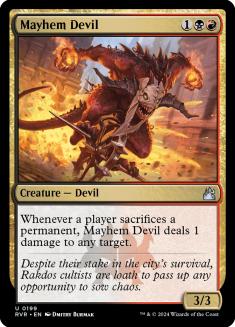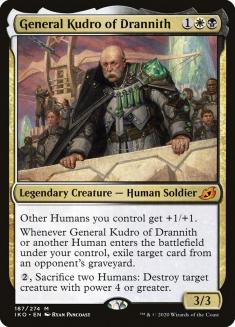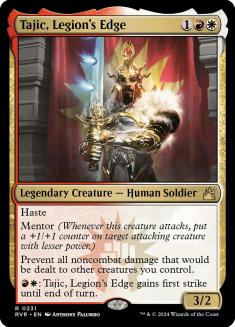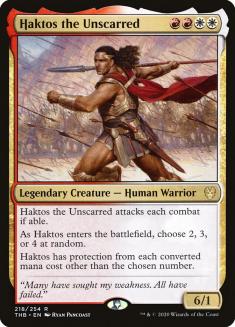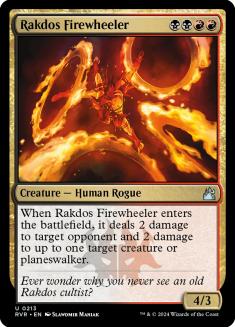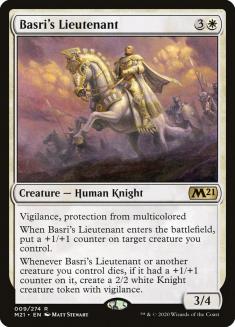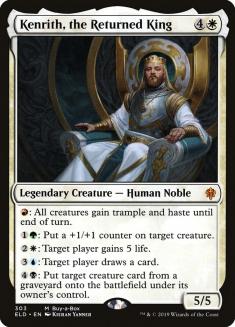Has it really come to this? Is Winota, Joiner of Forces our last hope for breathing new life into a stale Core Set 2021 Standard format? Back when Winota played the role of the world’s scariest game show host, pulling back each door to reveal Agent of Treachery or Angrath’s Marauders, the idea would have seemed absurd. Winota almost died a villain but lived long enough to see itself become a hero.
Michael Jacob, known for his no-nonsense attitude to choosing and refining decks, turned his attention to Mardu Winota for the Players Tour Finals and was rewarded with a Top 8 — and maybe more, if he can finish the job this weekend. Jacob’s endorsement of this archetype would count for a lot regardless, but his sprint to the Top 8 of one of the most difficult Magic tournaments in recent memory counts for even more. Performing well in this event meant holding your own against Temur Reclamation — did Jacob finally crack the code?
Creatures (31)
- 3 Kitesail Freebooter
- 4 Venerated Loxodon
- 1 Tajic, Legion's Edge
- 3 Judith, the Scourge Diva
- 3 Lazotep Reaver
- 1 Knight of the Ebon Legion
- 3 Woe Strider
- 1 General's Enforcer
- 4 Winota, Joiner of Forces
- 4 Basri's Lieutenant
- 4 Selfless Savior
Lands (25)
Spells (4)

Winota poses a novel deckbuilding challenge. You have to work out how to fill the battlefield with non-Humans before your Winota turn, how many and which Humans you need to ensure Winota converts that into a win, and how to fill out the rest of the deck to form a cohesive whole. In this eight-set Standard, there are more than enough tools up and down the curve for each of these tasks. This explains why Mardu Winota is making its mark and why finding a build that could do that took so long. Michael Jacob’s list is not definitive or final but it offers a useful illustration of how an accomplished deckbuilder navigates these decisions.
How Reliant Can/Should I Be on Winota?
Winota’s successful campaigns so far were in shells that are very much “Winota decks” – the Naya Winota deck that briefly dominated Historic, or Four-Colour Winota with Neoform that showed up in Best-of-One for the Arena Open. These decks are barely functional without their namesake but are built to find and exploit it as much as possible. By contrast, Mardu Winota has no hope of spewing out seven-drops on Turn 4 but pairs Winota with cheap Humans that are fine cards to cast on-curve in an aggressive strategy. Consider some typical draws from Jacob’s list:
- Turn 1: Selfless Savior
- Turn 2: Raise the Alarm
- Turn 3: Judith, the Scourge Diva; attack for six
- Turn 2: Kitesail Freebooter
- Turn 3: Tajic, Legion’s Edge; attack and trigger mentor
- Turn 4: Basri’s Lieutenant, putting a counter on Tajic; attack and trigger mentor again
- Turn 2: Raise the Alarm
- Turn 3: Lazotep Reaver, cast Venerated Loxodon for twelve total power
These draws aren’t striking fear into the hearts of most opponents — aggressive decks that can apply more pressure than this more consistently have failed to gain traction in Core Set 2021 Standard — but they are an acceptable ‘fail case’ for a deck that can overpower anything when it does have Winota. With enough material on the battlefield, Judith does a solid impression of Angrath’s Marauders as an ideal Winota hit — you can count to twenty easily enough, and you don’t need to run up the score.
If this list needs to rely on Winota less often, it can breathe easily when it does. Sorcery-speed removal or sweepers are too late to clean up the battlefield unless Winota misses entirely. The instant-speed interaction in the most popular deck lines up poorly against Winota itself; Brazen Borrower and Aether Gust only delay the inevitable for a turn and its four toughness lets it dodge Bonecrusher Giant or Scorching Dragonfire.
Aether Gust, the one card that covered both ends of the format on paper, fell out of favour as savvy Temur Reclamation pilots realized that the card was somewhat conditional in mirrors (especially against the Four-Colour version that was known to have the edge in the mirror) and Mono-White Aggro made a late surge as the default aggressive deck. Michael Jacob made some characteristically wise card choices with Aether Gust in mind, opting for Woe Strider over Legion Warboss as a three-drop and shaving red cards like Judith, the Scourge Diva against decks with a full pack of Gusts — his post-sideboard configuration is Orzhov Aggro splashing one of the scariest cards in Standard. Some of his opponents went so far as to keep in Mystical Dispute, an otherwise embarrassing card here, just to have some kind of permanent answer to Winota.
For the Players Tour Finals, over half of the players registered Wilderness Reclamation; if you were one of them. you couldn’t justify maindecking anti-creature tools that were blank in mirrors. If Mardu Winota becomes a late contender to Reclamation’s throne, we might expect cards like Redcap Melee or Essence Scatter to appear in sideboards, but these fight the wrong battle. Winota, Joiner of Forces incentivizes cheap creatures or cards that generate several creatures and the best Human payoffs in the Mardu colours are all strong against targeted removal.
If the maindeck Negates that were everywhere last weekend don’t hit Lazotep Reaver, the sideboard Essence Scatters that could replace them are no better against Raise the Alarm. Cards like Heartless Act that cleanly trade with Winota have no home in the format, but if they did, they would still be weak against every other card in the deck. Selfless Savior and Kitesail Freebooter offer preemptive protection against the handful of these effects that show up occasionally.
How Do I Build Around Winota?
Jacob attributes his success to his commitment to Venerated Loxodon more than any other choice. The Elephant in the room allows for a new subset of nigh-unbeatable draws that don’t require Winota but do make excellent use of the same ‘army-in-a-can’ cards that power its headline act. Woe Strider over Legion Warboss makes more sense in this context and even creates a white token that can pay for that part of the convoke cost. Basri’s Lieutenant as the curve-topper of choice for Winota gives Loxodon-powered starts vital insurance against mass removal like Storm’s Wrath or Solar Blaze that Reclamation leans on to cover its bases against other aggressive decks.
While Venerated Loxodon offers a form of consistency by giving you more ways to power up your motley crew, this comes at a steep cost. Its strength scales with the overall strength of your draw, adding a nice flourish to quick starts — where other payoffs like Winota or Judith, the Scourge Diva are also effective — but making your problems worse if you lack resources or have to stagger your development due to mana issues. This also applies to cards like Embercleave that compete with Loxodon in practice as there are severe diminishing returns to drawing multiples. Mardu Winota makes good use of the London mulligan, a main point of comparative advantage over the rest of the format, and must be willing to send back mediocre hands; the demands that Venerated Loxodon makes of you run against this.
Venerated Loxodon initially earned its reverence in the base-white aggressive strategies that dominated Pro Tour Guilds of Ravnica, flooding the battlefield with one-drops that allowed Loxodon to represent nine power for ‘free’ as early as Turn 3. By contrast, Mardu Winota can count its one-drops on one hand and has a hard time casting them on curve anyway. That’s not because of a lack of options but because they don’t fit together:
This generation of one-drops is wordier than ever before but there’s barely a Savannah Lions among them; the tools aren’t there to support dedicated aggression. We find little depth or redundancy in one-drops in any one colour (Mono-Red has to make up the numbers with Tin Street Dodger) and the best one-drops pull you in different directions (Cauldron Familiar and Knight of the Ebon Legion are both outstanding but rarely seen in the same uniform). The mana-fixing in Standard can’t cast one-drops in several colours consistently; Mardu Knights could just about get away with the twelve-pack of Knight of the Ebon Legion, Fervent Champion, and Venerable Knight thanks to Tournament Grounds, but that locks you into a tribal shell with less flexibility and lower overall card quality.
Interestingly, this problem isn’t fixed by leaning harder into a single colour here anyway. Consider Jacob’s manabase:
- 4 Savai Triome
- 4 Sacred Foundry
- 4 Godless Shrine
- 4 Blood Crypt
- 2 Fabled Passage
- 2 Plains
- 1 Swamp
- 1 Mountain
- 1 Temple of Silence
- 1 Temple of Triumph
- 1 Castle Embereth
Every colour has access to two out of three shocklands and a basic land or two on Turn 1 and gets to share Savai Triome and Fabled Passage afterwards. This leaves only a few slots open in a manabase which can’t afford too many of a single basic land (drawing two Plains and an uncastable Judith is a disaster) unless you run a higher land count, which is somewhat tempting when you need to curve out perfectly with tough colour requirements and rarely flood thanks to Savai Triome, Temples, and utility lands like Castle Embereth.
If the available one-drops are tough to cast early and not worth casting later, how about one-drops that are easy to cast early and can fill out any missing spot on your curve?
Jacob quickly moved away from Stonecoil Serpent after its poor performance in earlier iterations and tension with Tajic, Legion’s Edge. While I think there’s a lot to like about Jacob’s list and the process that arrived at it, I would make a point of revisiting Stonecoil Serpent. Its creative solution to the one-drop problem is already appealing but the automatic synergy with Basri’s Lieutenant and resistance to Teferi, Time Raveler pushes it over the edge. In particular, its flexibility is important given Jacob’s focus on Venerated Loxodon, as a 1/1 Stonecoil Serpent can act as the final down payment for Loxodon on a future turn.
The roster of two-drops contains strong Humans and non-Humans alike. As with Collected Company, you want to maximize the virtual mana discount of your Winota triggers and this pushes you towards spending your limited slots for Humans on high-impact three-drops and four-drops over fine but replaceable cards like Seasoned Hallowblade. Kitesail Freebooter is the crucial exception as it provides a unique effect that can dismantle a draw relying on Growth Spiral or Wilderness Reclamation to keep up, take the sweeper that could remove Freebooter itself along with everything else, or clear the way for Winota. General’s Enforcer offers a similar shield for Winota and is the perfect sidekick for Judith and Tajic.
Note that Priest of Forgotten Gods, Dreadhorde Butcher, and Tithe Taker can join Cauldron Familiar and Gutterbones as well as Woe Strider and Judith as the core of a quite different Mardu Winota shell that models itself on Rakdos Sacrifice.
The focus on three-drop Humans raises the bar for non-Human Winota enablers. Rotting Regisaur used to have that spot reserved as a good backup plan, the best threat against Temur Reclamation, and one half of what you might call a Splinter Twin situation with Embercleave. Now, Embercleave has been jettisoned and the Reclamation decks are much better at handling Regisaur with Shark Typhoon; Brazen Borrower; and even Teferi, Time Raveler in Four-Colour Reclamation. Riku Kumagai’s success in the same tournament with Mono-Black Aggro without Regisaur despite its previous status as the ‘best Regisaur deck’ highlights the importance of not having these sacred cows. Again, there are lots of good cards on this list, but they don’t necessarily do the right job, even if they do theirs well.
Basri’s Lieutenant has taken over from the hard-to-cast Haktos as the ‘other’ four-drop for Winota that is better at playing regular Magic and opens up the freeroll of Jegantha, the Wellspring. Kenrith, the Returned King is a little pricey but can take over games singlehandedly and is often the ideal Winota hit — unlike most decks with Kenrith, Mardu Winota can use the reanimation ability to rebuild your battlefield (and leverage that immediately by granting haste and trample).
Mardu Winota is an exciting puzzle and intriguing new development at this late stage of Core Set 2021 Standard. If it turns out to be a one-week wonder, that’s at least one week closer to a fresh format — where Winota, Joiner of Forces and its new crew will be a great starting point.



